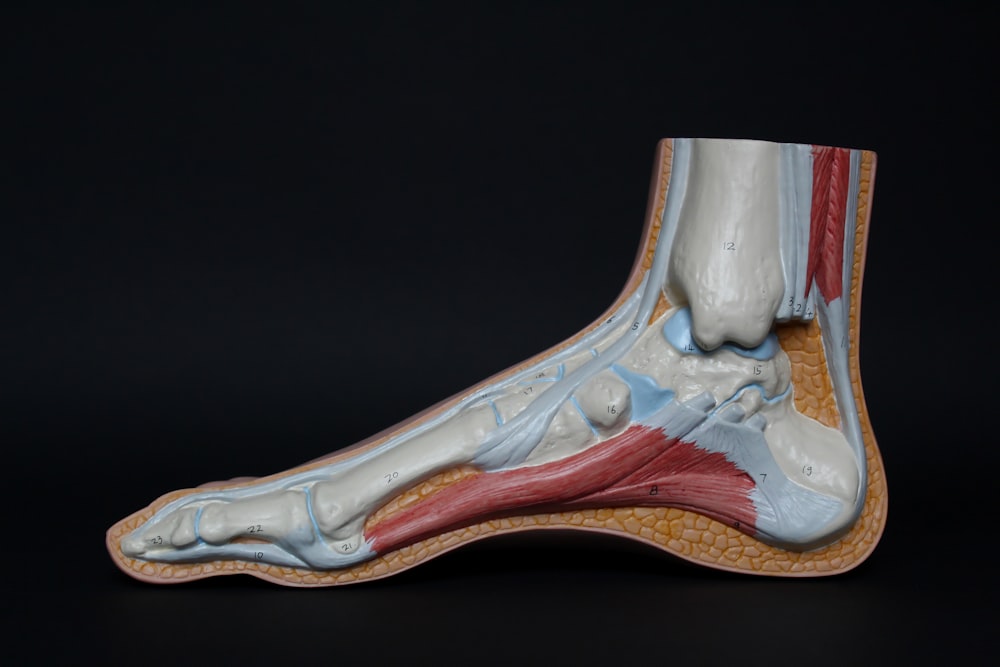目次
アキレス腱断裂症例では足関節底屈位での底屈筋力評価が重要
アキレス腱断裂症例で問題になることが多いのが足関節底屈筋群の筋力低下です.
足関節底屈筋群の筋力改善に向けさまざまなトレーニングをすると思います.
今回はアキレス腱断裂症例では足関節底屈位での底屈筋力評価が重要であるといったお話です.

今回ご紹介する論文
Am J Sports Med. 2006 Jul;34(7):1120-5. doi: 10.1177/0363546505284186. Epub 2006 Feb 13.
Weakness in end-range plantar flexion after Achilles tendon repair
Michael J Mullaney 1, Malachy P McHugh, Timothy F Tyler, Stephen J Nicholas, Steven J Lee
Affiliations expand
PMID: 16476917 DOI: 10.1177/0363546505284186
今回ご紹介する論文は2006年に掲載された論文です.
研究の背景
Background: Separation of tendon ends after Achilles tendon repair may affect the tendon repair process and lead to postoperative end-range plantarflexion weakness.
アキレス腱修復後の腱端の分離は,腱修復過程に影響を及ぼし,術後の足関節底屈最終域における底屈筋力低下を引き起こす可能性があります.
研究の仮説
Hypothesis: Patients will have disproportionate end-range plantarflexion weakness after Achilles tendon repair.
この研究ではアキレス腱修復後に足関節底屈最終域において底屈筋力低下を引き起こすといった仮説を立案しております.
研究デザイン
Study design: Descriptive laboratory study.
研究デザインは記述的実験室研究となっております.
研究の方法
Methods: Four-strand core suture repairs of Achilles tendon were performed on 1 female and 19 male patients. Postoperatively, patients were nonweightbearing with the ankle immobilized for 4 weeks. Plantarflexion torque, dorsiflexion range of motion, passive joint stiffness, toe walking, and standing single-legged heel rise (on an incline, decline, and level surface) were assessed after surgery (mean, 1.8 years postoperative; range, 6 months-9 years). Maximum isometric plantarflexion torque was measured at 20 degrees and 10 degrees of dorsiflexion, neutral, and 10 degrees and 20 degrees of plantar flexion. Percentage strength deficit (relative to noninvolved leg) was computed at each angle. Passive dorsiflexion range of motion was measured goniometrically. Passive joint stiffness was computed from increase in passive torque between 10 degrees and 20 degrees of dorsiflexion, before isometric contractions.
アキレス腱の4本コア縫合修復を女性1例と男性19例に対して施行しております.
術後,足関節を4週間固定し免荷としております.
術後(術後1.8年,範囲6ヵ月~9年)に足底屈トルク,背屈可動域,受動的な関節スティフネス,つま先歩き,立位での片脚ヒールレイズ(上昇傾斜面,下降傾斜面,水平面)を評価しております.
最大等尺性足底屈トルクは背屈20度,背屈10度,底背屈中間位,底屈10度,底屈20度で測定しております.
各角度における筋力欠損率(非侵襲脚に対する相対値)を算出しております.
受動的背屈可動域はゴニオメーターを用いて測定しております.
受動的関節スティフネスは等尺性収縮の前に背屈10~20度の間の受動的トルクの増加から算出しております.
研究の結果
Results: Significant plantarflexion weakness was evident on the involved side at 20 degrees and 10 degrees of plantar flexion (34% and 20% deficits, respectively; P <.001), with no torque deficits evident at other angles (6% at neutral, 3% at 10 degrees of dorsiflexion, 0% at 20 degrees of dorsiflexion). Dorsiflexion range of motion was not different between involved and noninvolved sides (P = .7). Passive joint stiffness was 34% lower on the involved side (P <.01). All patients could perform an incline heel rise; 14 patients could not perform a decline heel rise (P <.01).
有意な足関節底屈筋力低下は底屈20度および底屈10度において患側に認められ(それぞれ34%および20%の欠損;P<.001),他の角度ではトルク欠損は認められませんでした(ニュートラルで6%、背屈10度で3%、背屈20度で0%).
背屈可動域は患側と健側で差はありませんでした(P = 0.7).
受動的関節スティフネスは患側で34%低い結果でありました (P <.01).
全例が上昇傾斜面でカーフレイズを行うことができましたが,14例は下降傾斜面でカーフレイズを行うことができませんでした (P <.01).
研究の結論
Conclusion: Disproportionate weakness in end-range plantar flexion, decreased passive stiffness in dorsiflexion, and inability to perform a decline heel rise are evident after Achilles tendon repair. Possible causes include anatomical lengthening, increased tendon compliance, and insufficient rehabilitation after Achilles tendon repair.
アキレス腱修復後には足関節底屈最終域での底屈筋力の低下,背屈の受動的スティフネスの低下,decline heel rise(下降傾斜面でのカーフレイズ)ができないことが明らかになりました.
考えられる原因としては解剖学的伸張,腱のコンプライアンスの増大,アキレス腱修復後の不十分なリハビリテーションなどが挙げられます.
今回はアキレス腱断裂症例では足関節底屈位での底屈筋力評価が重要であるといったお話でした.
今回の結果から考えるとアキレス腱断裂症例では足関節底屈位で底屈筋力評価およびトレーニングを実施する必要がありますね.






